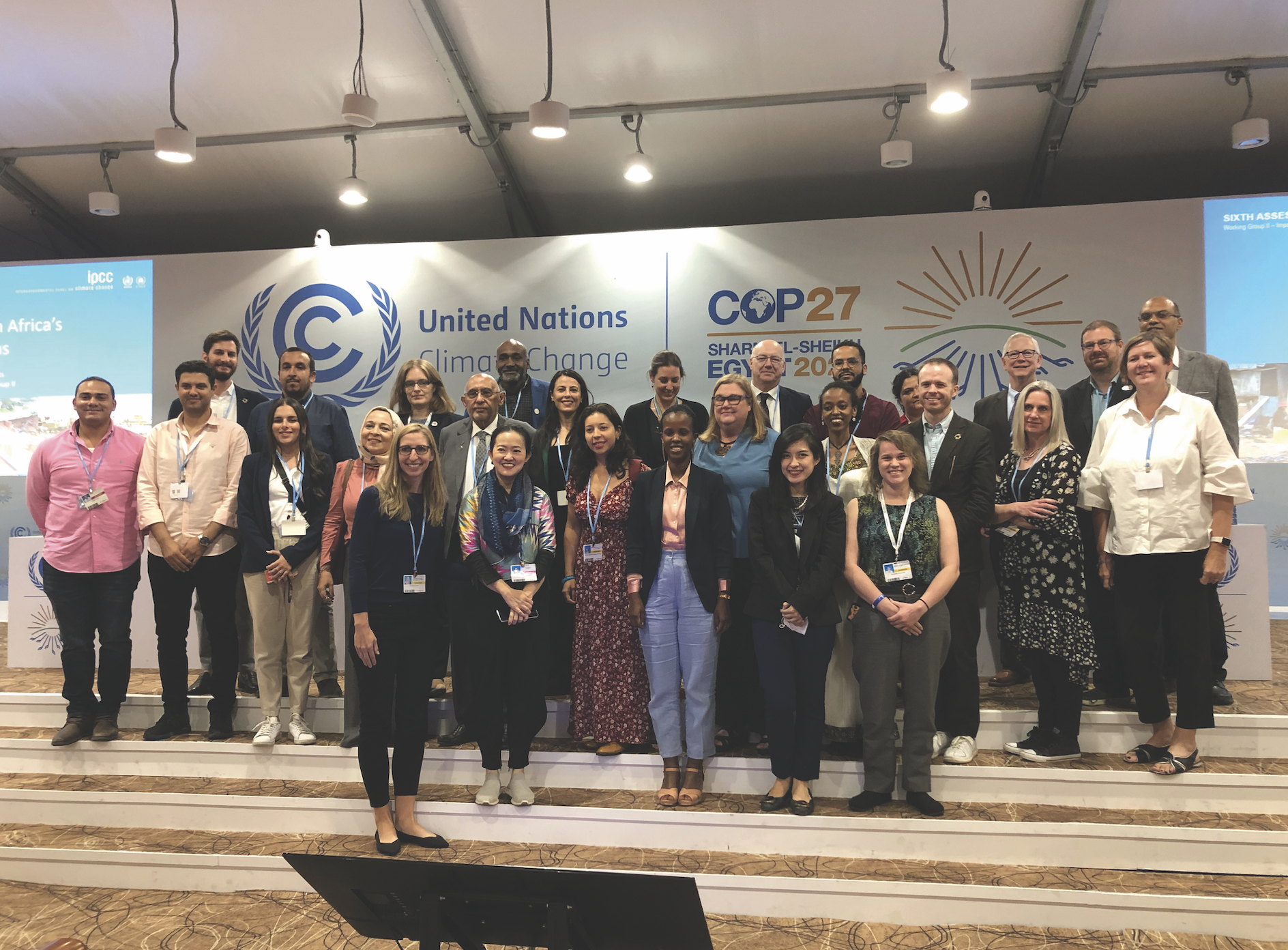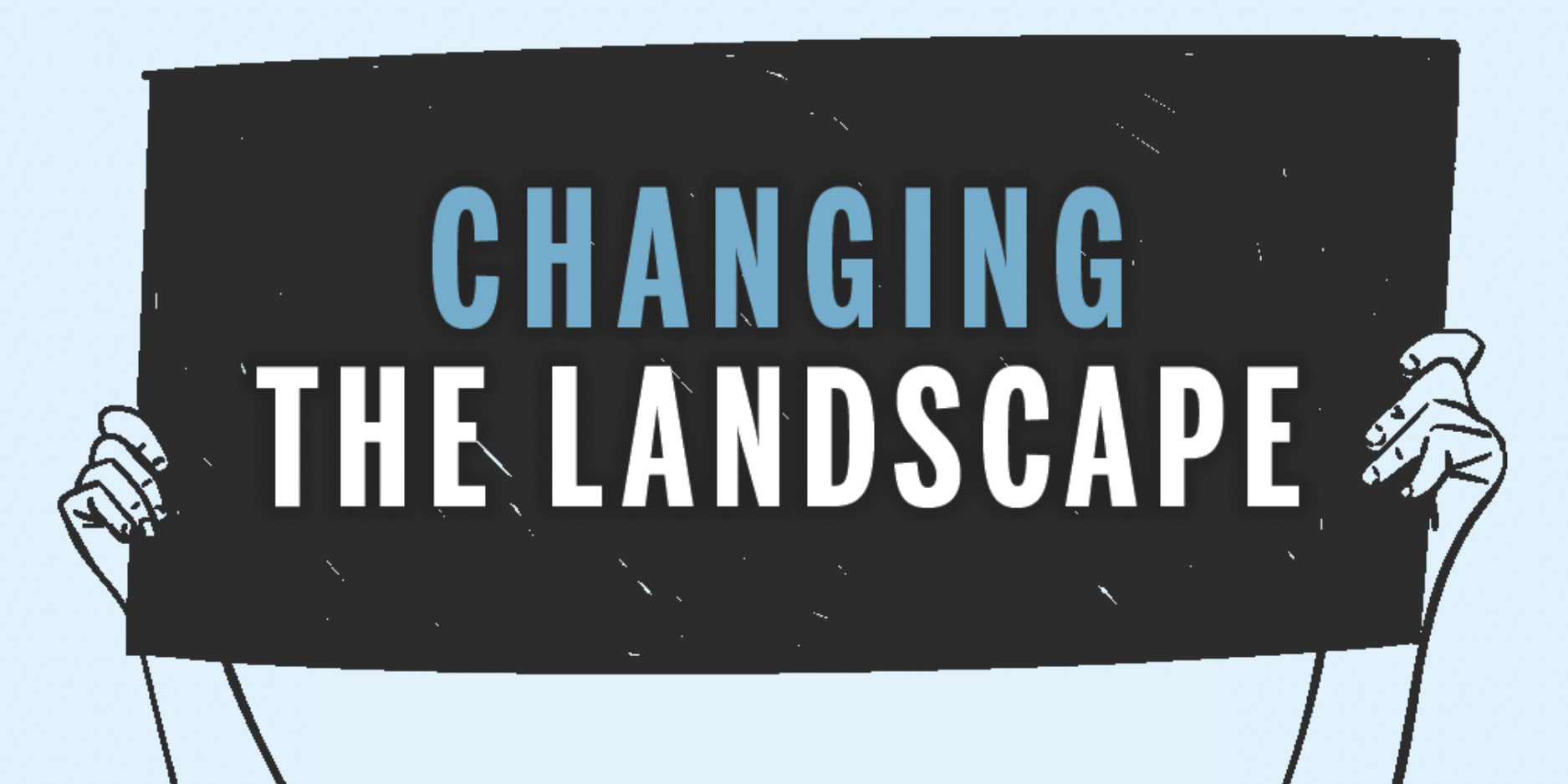Changing the Landscape
The Black Lives Matter movement Has Forced Us to Take A Hard & Honest Look At Our Communities, Our Industry & Ourselves
Pamela Conrad is Changing the Way the Industry Combats Climate Change
The urban built environment is responsible for 75 percent of the world’s global greenhouse gas emissions. When landscape architect Pamela Conrad saw this statistic, she knew she was in the right role to make a difference. Building on her 20 years of industry experience, Pamela helps fellow landscape architects and designers take a climate-positive approach to their projects.
“We’re capable of not just offsetting the negative impact, but being part of the solution,” she says.
"We want our projects to have
an actual positive impact on the planet."
.png?width=1626&height=1328&name=Pamela%20Conread%20(2).png) Thammasat University Urban Rooftop Farm, Pathum Thani Province, Thailand/Landprocess
Thammasat University Urban Rooftop Farm, Pathum Thani Province, Thailand/Landprocess
Pamela’s impressive resume reflects her deep passion for the landscaping industry and the environment. She’s the chair of the American Society of Landscape Architects (ASLA) Climate Action Plan, vice chair of the International Federation of Landscape Architects Climate Change Working Group and a Loeb Fellow at the Harvard Graduate School of Design. An industry expert, she represented ASLA at COP27, the United Nations Convention on climate change held last year in Egypt.
.png?width=1496&height=1170&name=Pamela%20Conread%20(3).png) Pamela Conrad at COP27
Pamela Conrad at COP27
After serving as principal of CMG Landscape Architecture in San Francisco for nine years, she founded her own organization, Climate Positive Design, where she launched the innovative app Pathfinder.
.png?width=128&height=236&name=Pamela%20Conread%20(1).png) As a landscape architect and environmental steward, Pamela has always been conscientious about her projects’ impact, but she didn’t have an accurate way to measure her carbon footprint. So she got with a team of tech and data engineers and developed Pathfinder, a free app that calculates the carbon footprint of a landscaping project. After the user inputs various information such as plants, materials, scope and size, they receive a climate-positive score showing how many years it will take to offset the project’s carbon footprint. The app also provides useful feedback on ways to lower the score.
As a landscape architect and environmental steward, Pamela has always been conscientious about her projects’ impact, but she didn’t have an accurate way to measure her carbon footprint. So she got with a team of tech and data engineers and developed Pathfinder, a free app that calculates the carbon footprint of a landscaping project. After the user inputs various information such as plants, materials, scope and size, they receive a climate-positive score showing how many years it will take to offset the project’s carbon footprint. The app also provides useful feedback on ways to lower the score.
“I launched the Pathfinder App about three years ago, and now that we have some data collected, we can start to see the progress and trends to help us going forward,” she says. “We want the tool to be quick and easy for anyone to use. It just takes a few minutes to enter in the data needed.”
.png?width=361&height=261&name=Pamela%20Conread%20(4).png) Once the app got off the ground, Pamela shared the new technology with key stakeholders. She’s given more than 100 lectures and attended various meetings worldwide. Pamela’s efforts have garnered support from the academic sector as well as professional organizations such as ASLA, Landscape Architecture Foundation, Australian Institute of Landscape Architects, Architecture 2030, Canadian Society of Landscape Architects, International Federation of Landscape Architects and the Landscape Architecture Canada Foundation.
Once the app got off the ground, Pamela shared the new technology with key stakeholders. She’s given more than 100 lectures and attended various meetings worldwide. Pamela’s efforts have garnered support from the academic sector as well as professional organizations such as ASLA, Landscape Architecture Foundation, Australian Institute of Landscape Architects, Architecture 2030, Canadian Society of Landscape Architects, International Federation of Landscape Architects and the Landscape Architecture Canada Foundation.
“The climate crisis is a global issue and now, thanks to advocacy efforts, 175 countries have access to our resources,” Pamela says. “Just over the past year, companies using the app have increased by 50 percent.”

So far, Pathfinder is being used by landscape architects and professionals as well as municipalities, architects and engineers. To date, 5,500 projects have been logged by 2,000 companies and 1,500 students or university representatives.
Pamela says there are two key ways to create a climate-positive project: Reduce the carbon footprint and increase carbon sequestration. The carbon footprint is the amount of carbon dioxide and other greenhouse gases that are emitted from fossil fuels during a landscape project, while carbon sequestration is removing carbon from the atmosphere and storing it naturally in trees, grasses, soil, etc.
“So far, projects entered have included the planting of 1.7 million trees,” she says. “Our impact is 2.3 million metric tons of carbon sequestration by the year 2040—which is like taking 500,000 cars off the road.”
The materials landscaper designers select to use on their projects can impact the environment positively or negatively. Pamela says about 75 percent of the carbon emissions in a landscape project come from the creation of the extraction, transportation and construction of materials, while the rest is due to the operations on the site. The Pathfinder app helps compare the impact of using one material over another, among other recommendations which can help professionals make meaningful changes during the design process.
Concrete has a large carbon footprint compared to other materials. Not only does the process of making cement produce significant amounts of carbon dioxide, when concrete or other non-permeable materials replace natural areas, carbon sequestration cannot occur.
The Pathfinder app steers users toward suppliers that are more transparent about their carbon footprint and that are working to produce sustainable products, such as Vestre outdoor furniture. “On the design side, professionals are getting on board, and we want to continue working together with other sectors like the manufacturers,” says Pamela.
Projects entered into the app this past year have a 12 percent reduction in emissions per square foot over the prior two years.
"If we keep doing this every year, we can get to zero—that’s progress in the right direction."
In addition to the app, Climate Positive Design provides a free educational toolkit available to download from the website. This information has also been included within the recent ASLA Climate Action Field Guide. “The 100-page field guide recommends specific actions, from using organic fertilizer, installing native plants to operating with battery-powered equipment and other actions we can take in our everyday work,” Pamela says. “It’s also great for designers to get the maintenance company on board and create the operations manual together to discuss how often plant materials should be watered and maintained, what amendments should be used, ways to minimize soil disturbance, etc.”
Pamela encourages professionals to try the Pathfinder app on the Climate Positive Design website and share additional benefits they’d like to see. “Users make recommendations, sometimes with a donation, and continue to give feedback on what would be helpful—this is how improvements happen,” she says. “In the future, I’d love to give a more comprehensive snapshot of the project. For instance, we could show how one acre of native plants can reduce X amount of water consumption, and support X amount of biodiversity and sequester X amount of carbon.”
As the app continues to develop and more data is added, Pamela says it will be a game changer for residential, commercial and civic projects worldwide. After all, numbers don’t lie.
“As an industry, we can start to define the maximum number of carbon emissions there should be for a project per square foot and the minimum number of carbon sequestration,” adds Pamela.
A clear path to a better future is there, right at our fingertips.
Pamela’s Pro Tips
Pathfinder App By the Numbers

The Black Lives Matter movement Has Forced Us to Take A Hard & Honest Look At Our Communities, Our Industry & Ourselves